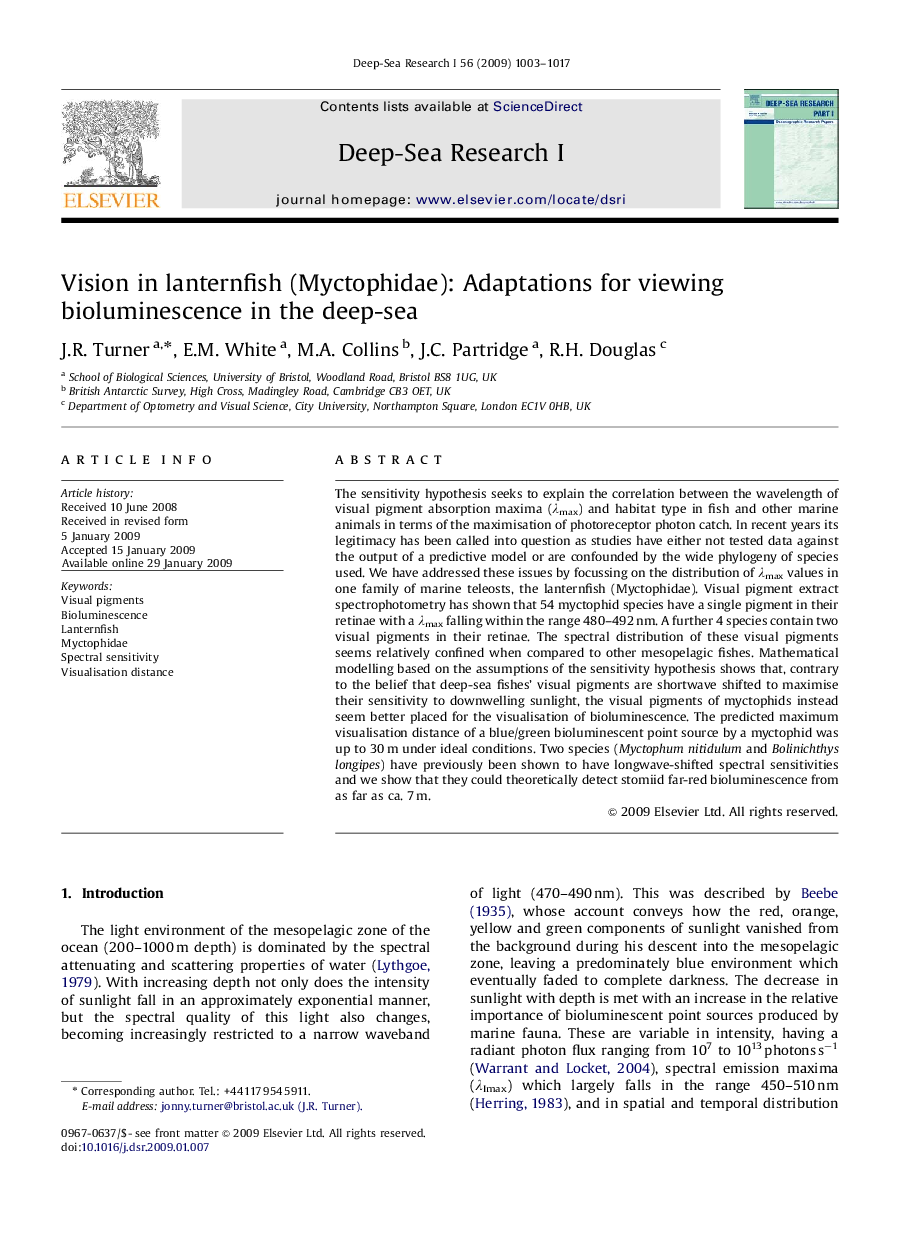| Article ID | Journal | Published Year | Pages | File Type |
|---|---|---|---|---|
| 4535254 | Deep Sea Research Part I: Oceanographic Research Papers | 2009 | 15 Pages |
The sensitivity hypothesis seeks to explain the correlation between the wavelength of visual pigment absorption maxima (λmax) and habitat type in fish and other marine animals in terms of the maximisation of photoreceptor photon catch. In recent years its legitimacy has been called into question as studies have either not tested data against the output of a predictive model or are confounded by the wide phylogeny of species used. We have addressed these issues by focussing on the distribution of λmax values in one family of marine teleosts, the lanternfish (Myctophidae). Visual pigment extract spectrophotometry has shown that 54 myctophid species have a single pigment in their retinae with a λmax falling within the range 480–492 nm. A further 4 species contain two visual pigments in their retinae. The spectral distribution of these visual pigments seems relatively confined when compared to other mesopelagic fishes. Mathematical modelling based on the assumptions of the sensitivity hypothesis shows that, contrary to the belief that deep-sea fishes’ visual pigments are shortwave shifted to maximise their sensitivity to downwelling sunlight, the visual pigments of myctophids instead seem better placed for the visualisation of bioluminescence. The predicted maximum visualisation distance of a blue/green bioluminescent point source by a myctophid was up to 30 m under ideal conditions. Two species (Myctophum nitidulum and Bolinichthys longipes) have previously been shown to have longwave-shifted spectral sensitivities and we show that they could theoretically detect stomiid far-red bioluminescence from as far as ca. 7 m.
